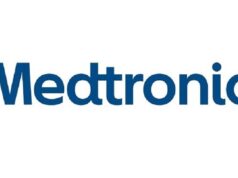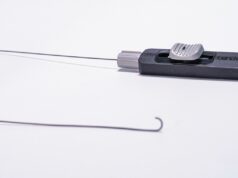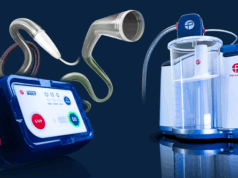Surmodics has announced that early results of a subset of 60 real-world acute, subacute, and chronic limb ischaemia patients from its PROWL registry study were presented by Dean Ferrera (Powers Health, Munster, USA) at TCT 2024 (27–30 October, Washington, DC, USA).
PROWL is an open-label, retrospective, multicentre US registry of the Surmodics Pounce thrombectomy platform for the non-surgical removal of emboli and thrombi in the peripheral arterial vasculature.
A press release details that the registry is collecting real-world efficacy and safety outcomes data for endovascular interventions using the fully mechanical, non-aspiration-based Pounce platform for up to 500 patients at up to 30 sites.
The core lab-adjudicated study is enrolling all patients treated with the Pounce platform, including those with shortened life expectancy, history of cancer or COVID-19, and those with prior interventions to the target limb.
Ferrera, on behalf of the PROWL investigators including national co-principal investigators Sean Lyden (Cleveland Clinic, Cleveland, USA) and Joseph Campbell (OhioHealth, Columbus, USA) presented results from the infrainguinal PROWL subset.
All patients in the 60-patient subset analysis were treated with the Pounce thrombectomy system, indicated for use in peripheral arteries 3.5–6mm in diameter. The analysis examined patients with symptomatic native, infrainguinal vessels, followed through 30 days.
Surmodics reports that procedural success, defined as restoration of pulsatile flow in the target lesion(s) with or without adjunctive treatment (patient level success), was 90%; nearly all (96.8%) patients experienced final post-procedural TIPI (thrombo-aspiration in peripheral ischaemia) 2–3 blood flow restoration; and technical success, defined as restoration of blood flow to the target lesion(s) with <50% residual obstruction without the need to initiate catheter-directed therapies or to proceed to open surgery or other endovascular thrombectomy devices (lesion-level success), was 80.8%.
Furthermore, the company shares that 49 of the 60 patients (81.7%) received no further thromboemboli removal treatment within 30 days post Pounce system use and that product use was well tolerated, with only one patient (1.7%) experiencing device-related adverse events.
Surmodics notes that previous studies of aspiration thrombectomy for symptomatic limb ischaemia excluded patients with symptom duration greater than 14 days or patients whose thrombi or emboli were not fresh. In the 60-patient PROWL cohort, however, 60% of patients presented with acute (≤14 days) limb ischaemia, 16.7% with subacute (15–28 days) limb ischaemia, and nearly one in four (23.3%) presented with chronic (>28 days) limb ischaemia. Forty patients (66.7%) in the 60-patient cohort avoided an intensive care unit (ICU) admission, while 49 (81.7%) were discharged home.
“Although patients with limb ischaemia often seek care acutely, many patients present after experiencing symptoms for several days or weeks,” said Campbell. “As a result, operators are often challenged to remove clots of mixed morphology and chronicity, which may impact procedural success rates both with thrombolytic and primary aspiration strategies. These early PROWL results suggest that the Pounce thrombectomy system is effective as a standalone solution for removing acute-to-chronic clot in real-world clinical settings without use of adjunctive thrombolytics, aspiration devices, or surgery.”
He added: “In terms of healthcare resource utilisation, the high rate of ICU avoidance and discharge home in this very ill population is encouraging. We’re eagerly awaiting further results from this highly promising registry study.”













